JSP Force 8 Half Mask & P3 Press to Check Particulate Protection
JSP Force 8 Half Mask with Typhoon Valve & Press To Check P3 Cartridges offers superior low breathing resistance and a 4-point suspension harness with quick release buckles. The mask is made with a durable thermoplastic rubber offering a superior fit to most face shapes. The mask accepts the full range of low profile Force 8 filters giving the Force 8 the flexibility to be used for many applications, providing filtering protection against particulates, many gases and vapours. Price £ 22.20 Ex VAT
JSP Force 8 Half Mask with Press to Check Filters
JSP Force8™ Half Mask & award winning Press to Check P3 Cartridge (Code BHT0A3-0L5-X00) offers superior low breathing resistance and a 4-point suspension harness with quick release buckles. The mask is made with a durable thermoplastic rubber offering a superior fit to most face shapes. The mask accepts the full range of low profile Force8™ filters giving the Force8™ the flexibility to be used for many applications, providing filtering protection against particulates, many gases and vapours.
Comfort
Durable thermoplastic rubber mask for superior fit to most face shapes.
Harness
Fully adjustable 4-point cradle suspension ensuring an effective facial fit.
CR2™ Reflectivity
Reflective strips create increased visibility in low-light environments for added safety.
Typhoon™ Exhalation Valve
Low resistance exhalation valve for easy breathing, with stable mask configuration.
Force™ Filters
Cost effective Force8™ filters available with low profile angle for minimum visual impairment.
Comformity
Conforms to EN140 (Face piece), EN14387:2004 (Filter performance), EN143:200 (Filter performance)
P3 Press to Check Particulate Protection
How can you be sure that you have donned your mask correctly?
With the new patent pending Force8™ PressToCheck™ filters you can instantly check that you have the correct seal every time.
Award winning
Winner of the BSIF Product Innovation Award.
Christmas-New Year Dispatch Dates:
- 18th December midday cut off.
Any orders placed after this date will be processed.
- 27th December midday cut off.
- 30th December midday cut off.
- Next dispatch date: 2nd January 2024.
- Whilst standard delivery is stated as 1-3 days we are currently delivering over 99% of orders the next business day as a standard service if placed before 2.30 pm.
Delivery Options:
- Standard Delivery: (1-3 business days) (£ 5.75 - £ 6.20)
- Next Business Day Delivery: (Order Must be placed before 2 pm) (£ 9.50 ex vat)
- Next Day Working Day Delivery Pre 12 delivery (Order Must be placed before 2 pm): £ 11.50 ex vat
- Next Working Day Delivery Pre 10.30 delivery (Order Must be placed before 2 pm): £ 13.95 ex vat
- Weekend Delivery Options:
- Saturday Delivery: (Order Must be placed before 12 pm) £ 22.50 ex vat
FREE DELIVERY OVER £ 75 NET
- The free delivery over £ 75 net is only available for UK mainland.
- Deliveries to Islands and highlands are a 2-3 day delivery option only & charged at £ 16 ex vat.
Frequently Asked Questions
01. What are the safety standards for the Force 8 Half mask?
The JSP face piece conforms to the EN 140 & the associated filter performance conforms to EN 14387:2004 & EN 143:200.
02. What is the weight of the Force 8 Half Mask Respirator?
The facepiece is very light weighing only 82g without filters and between 140-390g depending on the filter chosen.
03. How do you correctly put on the Force 8 Mask?
- Cusp the respirator & place over the nose and mouth area and pull the strap harness over the crown of your head.
- Take the bottom straps and hook together behind the neck.
- Tighten the top straps by pulling the ends to achieve a comfortable and secure fit.
- Tighten bottom straps using front or rear buckle straps.
- •Perform a positive/negative pressure fit test.
04. How do you clean & maintain the JSP Force 8 Mask?
- It is recommended to clean your mask after each use. If the filter is to be reused do not remove from the face piece & clean with a cloth and warm soapy water. Dry with a clean cloth.
- If the filters are removed clean the face piece using a cloth & weak detergent & air dry.
- Always check the respirator components prior to use especially the exhalation valves. If damaged or showing signs of deterioration replace.
05. What factors could affect the seal of my JSP Respirator?
- A good seal can only be achieved if the mask has an uninterrupted connection with the face.
- Factors that could affect this include
- Facial hair, wearers must be clean shaven
- Eyewear & head PPE.
- Jewellery & make up.
06. Can I wear the Force 8 Half Mask with Facial Hair?
- The simple answer is no, all face masks can only create a good seal with clean shaven faces.
- Quantitative tests have been undertaken with users that had beards, stubble and clean shaven. People with beards had minimal levels of protection, people with stubble had a higher level of protection but not sufficient enough to pass a face fit test. Only the clean shaven example achieved the correct face seal to provide protection. If personnel have beards we have a selection of masks that can be used for personnel with beards. (Powered Air Section)
We found other products you might like!
Frequently Asked Questions
01. What type of Mask is best for Coronavirus?
A filtering facepiece classified as FFP3 is the most effective against coronavirus. Crafted from synthetic fibre, a well-fitted P3 face mask has the potential to protect against inward leakage and capture very fine toxic particles. It also includes an exhalation valve that releases air, to prevent heat and moisture build-up. An FFP3 disposable mask combined with social distancing and frequent hand washing can offer optimal protection against potential virus transmission.
02. When to Use a Surgical face Mask or FFP3 respirators?
According to the World Health Organisation (WHO), a surgical face mask must be used if you are continuously coughing or sneezing. Also, FFP3 respirators are required when conducting infectious aerosol-generating procedures or taking care of a patient with confirmed or suspected coronavirus. Meanwhile, a face-covering is recommended when stepping out on an errand at places where it’s difficult to maintain physical distancing.
03. What is the difference in protection between FFP1, FFP2 & FFP3 masks?
Our FFP3 graded masks provide the highest level of protection available for respirator masks in the UK. A P3 mask will filter at least 99% of particles from 0.3 microns in size upwards & an APF 20.
FFP1 & FFP2 masks have less efficient filtration levels circa 80% & 94% as well as only filtering larger particle sizes.
04. Do I need an FFP2 Mask or an FFP3 Face Mask?
This depends entirely on the hazard encountered. A P3 face mask will always provide a higher level of protection than an FFP2 Respirator & will filter 99% of particles as small as 0.3 microns. FFP2 masks filter at least 94% of airborne materials however the size of particulate filtered tends to be larger at between 2-5 microns.
An FFP2 respirator will protect against slightly toxic substances whereas an FFP3 face mask will protect against toxic solid aerosols & dust.
05. How long can you wear a FFP3 mask?
The maximum duration of a P3 face mask may vary as per design specifications and manufacturer guidelines. The recommended wear time in a single shift is up to 8 hrs in optimal working condition however it is best to have a break each hour. If the FFP3 respirator is a poor fit, damaged, has become tainted or is causing discomfort and breathing problems, it should be removed and discarded safely in waste bins.
06. What size particulates will FFP3 Respirators protect against?
FFP3 Respirator masks will protect against particles as small as 0.3 microns in size upwards.
07. Why do the P3 Face Masks have expiry dates?
The FFP3 Face mask used for protection against hazardous viruses has a limited shelf life. The components of a product that has been in prolonged storage are likely to degrade which can impact its quality and level of performance. The expiration date is printed on the side or bottom of the packaging. If the FFP3 disposable mask has expired, the mask should not be used as it doesn’t meet the stringent criterion set by the health regulators.
08. What is the difference between an N100 mask or an FFP3 Graded Mask?
N100 is an American safety standard (NIOSH) and the equivalent of the UK safety standard FFP3 Face mask. An N100 respirator is the American NIOSH safety standard. All FFP3 disposable masks should be stamped as FFP3 to be allowed to be sold in the UK.
09. Do FFP3 masks need to be Face Fitted?
All tight fitting face masks should be face fitted A fit test of FFP3 respirators is vital to ensure health caregivers get complete protection against penetration of contaminated air in high-risk areas. Given the rapid progression of the Covid-19 outbreak, fit checking of respirators by trained personnel may not always be possible.
10. What is FFP3 Protection?
FFP3 is the UK & European protective standard with FFP3 protection the highest grade of protection available providing the user with a 99% filtration with an APF 20 x TLV. The FFP3 masks provide protection for toxic dust/aerosols such as asbestos, silica dust and viruses.
11. Do FFP3 Masks protect against viruses?
The HSE (Health & Safety Executive) recommend the use of FFP3 Graded masks against viruses as the highest level of respiratory protection equipment available with a protection level of at least 20 APF.
12. What does FFP3 protect against?
FFP3 dust masks will protect against very fine dust, toxic dusts & aerosols for example asbestos, powdered pesticides, hard wood dusts, lead, chromium & lime as well as viruses such as SARS, bird flu & Covid 19.
Protects against:
Asbestos, calcium carbonate, china clay, cement, cellulose, sulphur, cotton, flour, carbon, ferrous metals, hardwood, silicon, plastic, vegetable oils and mineral oils, lead paint, copper, aluminium, bacteria, fungi, Mould spores and mycobacterium tuberculosis (T.B.), chromium, manganese, nickel, platinum, strychnine, metal dust and smoke, viruses such as Avian flu, Swine Flu, Coronavirus, Sars and enzymes.
13. What is FFP3?
FFP3 is the European safety standard (UK) for protective masks. This protective grade of mask is used in dangerous environments providing the highest level of protection available at APF 20x TLV. FFP3 dust masks provide protection against very fine toxic dusts & aerosols including asbestos fibres, silica dust & viruses.
14. What does FFP3 stand for?
The FFP3 standard is the highest protective FFP Mask (filtering Face Piece) available providing 99% filtering efficiency with only 2% inward leakage & and APF 20 x TLV.
Masks can either be disposable masks or reusable masks with FFP3 protective filters. An FFP3 disposable mask must be stamped FFP3 (Protection Level) & correctly CE certified for this level or protection.
15. What examples of jobs would use an FFP3 Respirator?
Any job requiring the highest level of protection would require a P3 mask. Examples of jobs requiring FFP3 Respirator masks would be Construction, groundworks, healthcare & low grade asbestos work.


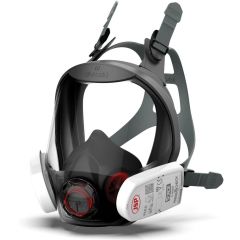
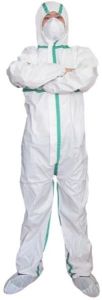
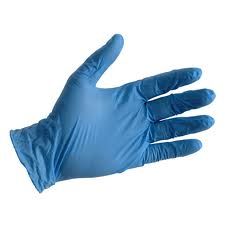
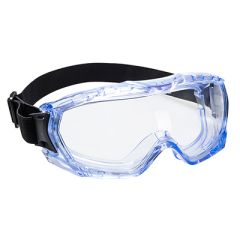
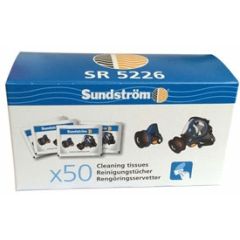
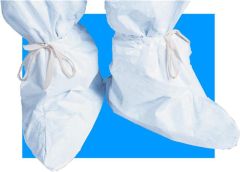
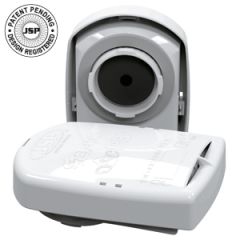
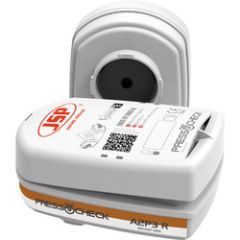
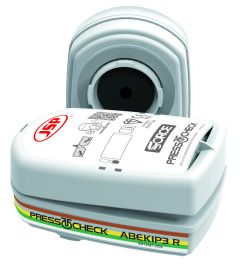
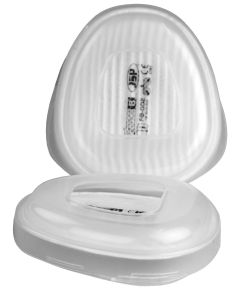
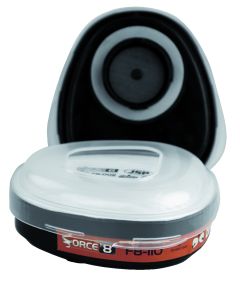
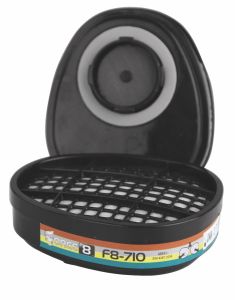
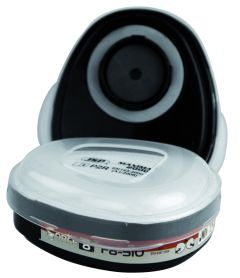
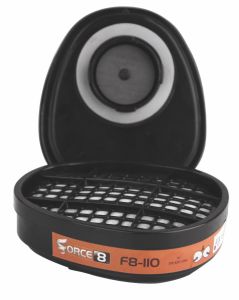
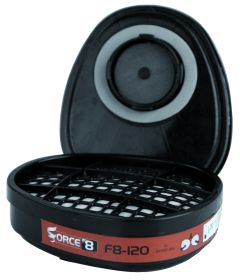
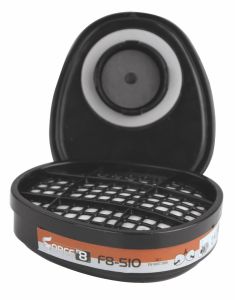

![JSP Force 8 Half Mask Storage Bag - [JS-BPT170-011-000]](https://www.protectivemasksdirect.co.uk/media/catalog/product/cache/52f7d0c48bf8324e540547e8a402d74e/a/_/a_waist-bound_bag_to_conveniently_store_a_jsp_force_8_half-mask_and_filters..jpeg)